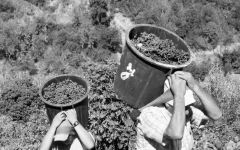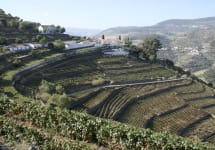Quinta do Noval Vintage Port 2014
-
Wine
Enthusiast -
James
Suckling -
Wine
Spectator -
Robert
Parker



Product Details
Your Rating
Somm Note
Winemaker Notes
Professional Ratings
-
Wine Enthusiast
This beautifully perfumed wine has all the tannins that will allow it to age over many decades. It also offers the rich blackberry, dark plum and great structure that will support that aging. As so often, Noval has released a vintage when other major producers have held back. But this powerful wine fully justifies the decision. Drink from 2025 for the fruit, 2030 for the complexity.
-
James Suckling
This is a really fantastic young vintage Port showing terrific clarity and power. Full body and a tight center palate of blueberry and plum character. So long and persistent in the mouth. Goes on for minutes. Try in 2023 and beyond. Not a generally declared year for Port, but this is a stunner.
-
Wine Spectator
A solid, textbook version, this has flesh and weight, with vivid blueberry, plum and blackberry compote flavors carried by lightly brambly grip through the licorice-fueled finish. Best from 2020 through 2035.
-
Robert Parker's Wine Advocate
The 2014 Vintage Port is a typical Douro field blend (bottled in September, 2016) with 101 grams per liter of residual sugar and 19.5% alcohol. This is filled with charm. I will say that it showed better in Porto as a barrel sample over the summer than it does now--it has closed up a bit after bottling. I'm going with my initial impression, because it should come back. Wonderfully aromatic and laced with herbs and spice, it is easy to see why it will be attractive. Its limitations are easy to see, too. It is probably a bit too compact for greatness, not really showing a lot of depth--even at age 15, the 2001 Nacional reviewed last issue surpassed it easily--and the structure is just average compared to some old-school examples from Noval. This still has many moments, though. If it is a bit light, it is fresh and lively, with just enough structure to carry on. It will certainly develop more complexity with age. At the moment, it is shockingly approachable, except for lacking truly expressive fruit. That should come in time--it was much tastier in Porto. About an hour in the glass, after use of an aerator, brought it around pretty well.
If you have read my table wine article this year, you will see many comments on the very difficult 2014 vintage. You might wonder why Noval declared a Vintage Port in this rather miserable year for most of Portugal and most of Douro--continuing Noval's very admirable effort to push the declaration envelope (having recently declared 2011, 2012, 2013 and now 2014 in a row). Good for them, is all I can say. Christian Seely said, "We might have avoided controversy by not declaring this Vintage of 2014, but I found the wine absolutely irresistible and had no hesitation at all in declaring this very small quantity (1,000 cases)..." Well, even if it is not the greatest Noval, so what? We sometimes pay for famous table wines in modest vintages that cost more and won't age nearly as well. Why should Port be any different? This holds its own pretty decently.
Other Vintages
2021-
Jeb
Dunnuck -
Wine
Enthusiast -
James
Suckling -
Wine
Spectator
-
Wine
Spectator - Decanter
-
James
Suckling -
Jeb
Dunnuck -
Wine
Enthusiast -
Robert
Parker
-
Robert
Parker -
James
Suckling -
Jeb
Dunnuck -
Wine
Spectator -
Wine
Enthusiast - Decanter
-
Wine &
Spirits
-
Wine
Spectator -
Wine
Enthusiast -
Jeb
Dunnuck -
Robert
Parker -
James
Suckling -
Wine &
Spirits
-
Wine
Spectator -
Robert
Parker -
James
Suckling -
Jeb
Dunnuck -
Wine
Enthusiast -
Wine &
Spirits
-
James
Suckling -
Wine
Spectator - Decanter
-
Robert
Parker -
Wine
Enthusiast
-
Wine
Spectator -
Robert
Parker -
Wine
Enthusiast -
James
Suckling -
Jeb
Dunnuck
-
Robert
Parker
-
Wine
Enthusiast -
Robert
Parker -
James
Suckling -
Wine &
Spirits -
Wine
Spectator
-
Robert
Parker -
Wine
Spectator -
James
Suckling
-
Wine &
Spirits -
Robert
Parker -
Wine
Spectator -
Wine
Enthusiast
-
Robert
Parker -
Wine
Enthusiast -
Wine
Spectator -
Wine &
Spirits
-
Wine
Spectator -
Wine &
Spirits -
Robert
Parker -
Wine
Enthusiast
- Decanter
-
Wine
Spectator
-
Wine
Spectator -
Robert
Parker
-
Wine
Spectator
-
Wine
Spectator




One of the oldest port houses, Quinta do Noval is also arguably the greatest. It is unique among top port houses in that most of the ports are made from estate-grown fruit and, notably, all of the vintage Noval wines are from the single Quinta do Noval vineyard. In addition, it is difficult to elaborate on Quinta do Noval without mentioning Nacional, the legendary port made from a 6 acre parcel of ungrafted vines. When declared, only 200-300 cases of Nacional will be made, and instantly become the most sought after port in the world. Many vintages of Nacional are considered as the finest ports, and some of the finest wines, ever made.
Noval is mentioned in land registries going back to 1715, and has been sold just twice in that time, once in the late 19th century, and to its present owners in 1993. Noval has, however, a reputation for being an innovative, independent producer. Noval’s focus on its vineyard and estate ports distinguishes it, but there are numerous other areas in which it has been a pioneer:
- Noval was the first to introduce stencilled bottles in the 1920s.
- Noval pioneered the concept of Old Tawnies with an indication of age.
- In 1958, Noval was the first to introduce a late-bottled vintage (LBV).
The astonishing terraced vineyards of Noval, perched above the Douro and Pinhao rivers, are an infertile schist, and not soil as much as sheer rock. The elevation of the vineyards goes from just above river level to 1,200 feet, with density at about 2,000 vines per acre, and vines producing on average 30-35 hectoliters per hectare. The tremendous rewards of the work done at the estate over the last fifteen years are visible across the range of Noval ports, and have placed Noval a step ahead of everyone in the Douro.

Port is a sweet, fortified wine with numerous styles: Ruby, Tawny, Vintage, Late Bottled Vintage (LBV), White, Colheita, and a few unusual others. It is blended from from the most important red grapes of the Douro Valley, based primarily on Touriga Nacional with over 80 other varieties approved for use. Most Ports are best served slightly chilled at around 55-65°F.

The home of Port—perhaps the most internationally acclaimed beverage—the Douro region of Portugal is one of the world’s oldest delimited wine regions, established in 1756. The vineyards of the Douro, set on the slopes surrounding the Douro River (known as the Duero in Spain), are incredibly steep, necessitating the use of terracing and thus, manual vineyard management as well as harvesting. The Douro's best sites, rare outcroppings of Cambrian schist, are reserved for vineyards that yield high quality Port.
While more than 100 indigenous varieties are approved for wine production in the Douro, there are five primary grapes that make up most Port and the region's excellent, though less known, red table wines. Touriga Nacional is the finest of these, prized for its deep color, tannins and floral aromatics. Tinta Roriz (Spain's Tempranillo) adds bright acidity and red fruit flavors. Touriga Franca shows great persistence of fruit and Tinta Barroca helps round out the blend with its supple texture. Tinta Cão, a fine but low-yielding variety, is now rarely planted but still highly valued for its ability to produce excellent, complex wines.
White wines, generally crisp, mineral-driven blends of Arinto, Viosinho, Gouveio, Malvasia Fina and an assortment of other rare but local varieties, are produced in small quantities but worth noting.
With hot summers and cool, wet winters, the Duoro has a maritime climate.
